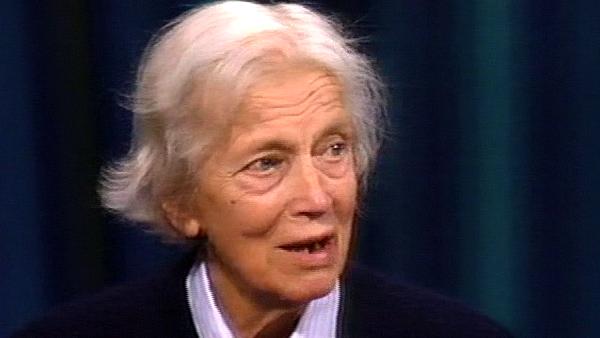NEXT STORY

Mapping the chemical structure of B12
RELATED STORIES

NEXT STORY

Mapping the chemical structure of B12
RELATED STORIES



|
Views | Duration | |
|---|---|---|---|
| 31. Meeting Lester Smith | 213 | 01:20 | |
| 32. Working on vitamin B12 | 1 | 249 | 03:09 |
| 33. Mapping the chemical structure of B12 | 169 | 00:53 | |
| 34. Calculating three-dimensional electron density maps | 104 | 07:36 | |
| 35. Complex chemistry | 94 | 04:43 | |
| 36. The phase problem | 219 | 02:12 | |
| 37. Insulin and heavy atoms | 1 | 109 | 01:46 |
| 38. The Bijvoet effect | 91 | 01:50 | |
| 39. The structure of insulin | 683 | 04:28 | |
| 40. Synthesising insulin | 165 | 03:13 |


Lester Smith was also in contact with Alex Todd. I imagine Alex Todd was a consultant advising them what they should do. Lester Smith at that time used to collect all the evidence that anyone else had collected who was working on B12 from our labs, whether they were working together or separately, and send them all to a small Glaxo group, which included Todd and myself.
[Q] Who did the crystallisation of that, Dorothy that led to the X-ray work being done? Was that you, or Lester Smith?
Lester Smith did, really, because he crystallised it from water, and just crystallised by evaporation, just like that.
[Q] Very simple.
And when he brought this preparation in, I just took a few crystals out of it that weren't good enough really to photograph, and put them in a drop of water, and then very beautiful, small crystals came out at the edge of the drop. And from these, you could see that it was extremely pleochroic. And I said, I can't understand Merck not saying in this letter to Nature that this compound was pleochroic. I expect the truth was they hadn't, they didn't use a mineralogist's microscope, so they didn't have crossed nicols or anything like that.
[Q] They couldn't have avoided it, could they?
Yes. It's really very beautiful. And I thought that would mean there was something like porphyrin ring in the molecule.
[Q] Was it known to contain cobalt then?
No, we had learned about the cobalt about a fortnight afterwards. Dr McCray, who was a researcher at Glaxo rang me up during lunchtime at home, and I was very lucky because I wasn't always at home for lunch - that day I was taking [unclear] home to lunch - and he rang us up and told us there was cobalt in the vitamin. And he said quite straight out, 'There's a heavy atom for you - you can work on this'. And, well, we knew the molecular weight about then, and it seemed to us cobalt was not really heavy enough in relation to the structure, but we tried nevertheless. And that was our first and earliest trouble.
British pioneer of X-ray crystallography, Dorothy Hodgkin (1910-1994), is best known for her ground-breaking discovery of the structures of penicillin, insulin and vitamin B12. At age 18, she started studying chemistry at Somerville College, Oxford, then one of the University of Oxford colleges for women only. She also studied at the University of Cambridge under John Desmond Bernal, where she became aware of the potential of X-ray crystallography to determine the structure of proteins. Together with Sydney Brenner, Jack Dunitz, Leslie Orgel, and Beryl Oughton, she was one of the first people in April 1953 to see the model of the structure of DNA, constructed by Francis Crick and James Watson. She was awarded the 1964 Nobel Prize in Chemistry and is also known for her peace work with organisations such as Science for Peace and the Medical Aid Committee for Vietnam. All recorded material copyright of The Biochemical Society.
Title: Working on vitamin B12
Listeners: Guy Dodson
Guy Dodson studied chemistry and physical science at the University of New Zealand, followed by a PhD on the crystallographic study of an alkaloid. In 1961, he came to Oxford to work on the crystal structure of insulin. In the mid 1970s Guy and his wife moved to York University to establish a laboratory. In addition to insulin studies the laboratory has investigated many complex molecules of medical significance, including haemoglobin, myoglobin, HIV related proteins, proteases and proteins involved in managing nucleic acids in cells. In 1993, he went to the NIMR in London to establish a crystallographic group in an environment that spanned molecular, physiological and disease-related disciplines. Here his research began on some cell signalling proteins. His interests on medically relevant proteins included prions, malarial and TB proteins, and some clinically relevant thrombin inhibitors. Guy Dodson retired in 2004 but is still finding much to do in York and the NIMR.
Tags: Alex Todd
Duration: 3 minutes, 9 seconds
Date story recorded: 1990
Date story went live: 02 June 2008